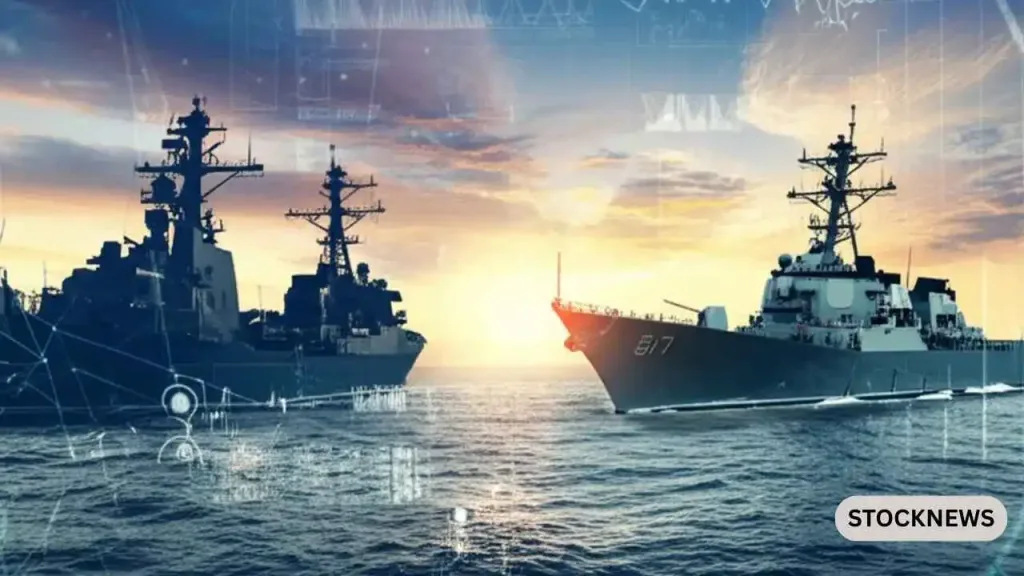In a significant move underscoring the expanding defense partnership between Washington and New Delhi, the United States has approved a $131 million sale of advanced naval technology to India. The agreement, announced this week, is being viewed as both a tangible upgrade to India’s maritime capabilities and a broader strategic message to regional rivals, particularly Pakistan and China.
Under the deal, India will receive cutting-edge surveillance and security systems, including the SeaVision maritime domain awareness software, training packages, and technical support. This technology will significantly bolster India’s ability to monitor sea-based threats, intercept suspicious vessels, and safeguard its maritime boundaries.
Though framed as a bilateral defense enhancement, analysts agree the timing and content of the agreement serve a larger purpose. “This isn’t just a technology transfer—it’s a strategic alignment,” said Dr. Rajan Menon, a defense analyst based in New Delhi. “The U.S. is reinforcing its trust in India as a long-term partner in the Indo-Pacific, a region of growing geopolitical friction.”
Strategic and Tactical Implications
The SeaVision software, developed by the U.S. Navy, is designed to boost situational awareness across territorial waters and high seas. It integrates intelligence on ship movements, fishing activity, and potential terrorist threats—capabilities that Indian officials say are critical given the nation’s vast coastline and persistent concerns over cross-border maritime infiltration.
Indian defense officials, speaking on background, emphasized that the technology would be used to counter both terrorist threats and illegal activities at sea, including those allegedly linked to Pakistani networks. Following past sea-based attacks such as the 2008 Mumbai assault, maritime security has become a key priority for India.
Though the Indian government has not named Pakistan explicitly in its official statements regarding the deal, the subtext is clear. “This is about deterrence,” one official said. “Those who use the sea to destabilize India should be on notice—we now have the tools to detect and act, faster and more decisively.”
Washington’s Calculated Commitment
The United States’ decision to deepen military cooperation with India—recognized formally as a “Major Defense Partner” in recent years—signals a broader shift in the Indo-Pacific calculus. By strengthening India’s naval capabilities, Washington aims to support a regional balance of power, especially as China expands its maritime footprint in the Indian Ocean and South China Sea.
The Biden administration has stated that its goal is to maintain peace and security in international waters and uphold the rules-based global order. However, U.S. State Department spokesperson Tammy Bruce also emphasized that Washington remains in diplomatic contact with both India and Pakistan, urging restraint amid heightened regional tensions.
“America’s engagement with both New Delhi and Islamabad continues at multiple levels,” Bruce said. “We are committed to working with all parties to ensure peace and stability in South Asia.”
A Cautionary Signal to Pakistan—and China
The deal has already stirred reaction across the border. Pakistani military sources have reportedly expressed concern that the technology could be used to surveil not only naval operations but also civilian fishing vessels operating near disputed waters. Some analysts warn this could lead to increased friction along the Line of Control and in contested maritime zones.
But perhaps more significantly, China is watching closely. In recent years, Beijing has intensified its presence in the Indian Ocean through infrastructure projects and naval patrols, raising alarm in New Delhi. The U.S.-India naval partnership is seen by many as a counterweight to Chinese influence.
“China’s maritime ambitions now face a more coordinated opposition,” said Sarah Liu, a senior researcher at the Asia-Pacific Security Forum. “The Indo-U.S. partnership sends a clear message: the Indian Ocean will not be ceded without challenge.”
Domestic Defense Industry Gets a Boost
Beyond geopolitics, the agreement carries important implications for India’s domestic defense sector. As part of the deal, American and Indian firms will collaborate to develop and assemble components of the new naval systems in India, furthering the Modi government’s “Make in India” initiative.
Indian defense manufacturers are expected to gain valuable exposure to U.S. technology and standards, positioning them to take part in future joint ventures and exports. Officials describe this as a step toward greater self-reliance in defense production, with potential spillover effects for jobs, innovation, and regional influence.
Looking Ahead
While the $131 million figure may seem modest in the context of global arms sales, the symbolism of the deal far outweighs its price tag. It reflects a convergence of strategic interests and a growing willingness by both India and the U.S. to confront common challenges—whether state-sponsored terrorism, Chinese expansionism, or the need for maritime security in one of the world’s busiest shipping corridors.

For Pakistan, the agreement is a warning shot. For China, it is a complicating factor. And for India, it is a significant leap forward in its effort to project strength, secure its borders, and cement its role as a key player on the world stage.
“Defense cooperation with the U.S. is not just about weapons,” an Indian Navy officer said. “It’s about trust, readiness, and a shared vision for the future.”
Would you like a visual breakdown or timeline of the key points in this deal?
